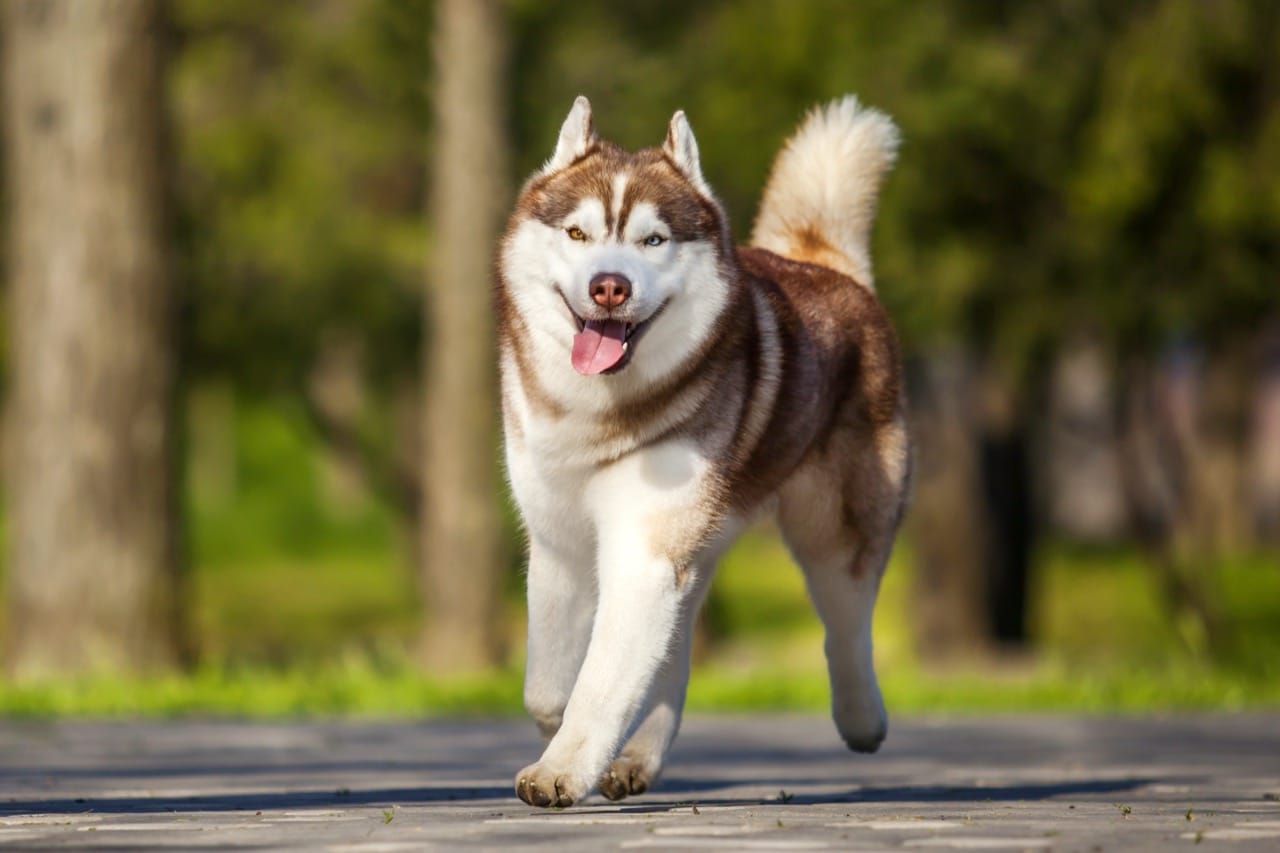The Siberian Husky, a breed that turns heads with its stunning appearance and captures hearts with its vivacious personality, is more than just a pretty face. Originating from the harsh and cold environments of Siberia, these dogs are built for endurance and versatility. Their striking features and friendly demeanor make them fascinating subjects, not just for pet lovers but also for those interested in the dynamics of breed development and adaptation.
Characteristics / Physical Description
Siberian Huskies are medium-sized dogs, typically weighing between 35 to 60 pounds. They possess a dense double coat that comes in a variety of colors and patterns, the most common being black and white. Their eyes are perhaps their most captivating feature, often blue or multi-colored, and they express a keen, friendly intelligence. The erect triangular ears and sickle-curved tail also contribute to their distinctive wolf-like appearance.
Taxonomy and Classification
Scientifically classified under the genus Canis within the family Canidae, Siberian Huskies share their lineage with other domestic dogs (Canis lupus familiaris). Originally bred by the Chukchi people of Northeast Asia, these dogs were designed to pull sleds over long distances, a testament to their remarkable resilience and strength.
Behavior and Social Structure
Siberian Huskies are known for their energetic and playful nature, which often lasts into their adult years. They exhibit a pack-oriented behavior, thriving on companionship with both humans and other dogs. Their friendly disposition, however, does not make them ideal watchdogs – a Husky is more likely to welcome an intruder than to ward them off. Training and socialization are crucial from an early age, as their intelligence can lead to stubbornness.
Habitat and Distribution
While originally bred by the indigenous Chukchi people of Siberia for sled-pulling, today Siberian Huskies can be found all over the world. They are particularly popular in areas with colder climates, although their adaptable nature allows them to thrive in warmer regions as well, provided they are given adequate care to manage heat exposure.
Diet and Feeding Habits
The diet of a Siberian Husky should be high in protein and fat, mimicking their traditional diet which included fish and small mammals. Modern Huskies might eat commercial dog food but also benefit from a diet supplemented with raw meats and appropriate vegetables and fruits.
Breeding and Reproduction
Siberian Huskies reach reproductive maturity around two years of age. They typically have litters of four to six puppies. Due to their popularity, responsible breeding practices are crucial to avoid overpopulation and to maintain the health standards of the breed.
Relationship with Humans
Siberian Huskies have a storied history of interaction with humans. They gained immense popularity during the Nome Serum Run of 1925, where they played a crucial role in delivering diphtheria antitoxin across harsh winter terrains. Today, they are beloved pets and also participate in dog sports like sled dog racing and agility training.
Evolutionary History
The breed has evolved to endure the harsh Siberian Arctic climate, which has equipped them with a thick fur coat for insulation and highly efficient ways to regulate their metabolism. These adaptations not only highlight their evolutionary success but also their role in human societies in Arctic regions.
Use as Research Animals
While not commonly used in experimental research, Siberian Huskies contribute to studies on canine exercise physiology, particularly relating to their endurance capabilities and metabolic adaptations to extreme cold and exhaustive physical activity.
The Siberian Husky stands as a testament to nature’s ability to sculpt life forms that not only survive but thrive in the most daunting environments. Their resilience, coupled with their striking beauty and spirited personality, ensures that they continue to be one of the most admired and beloved breeds around the globe.

